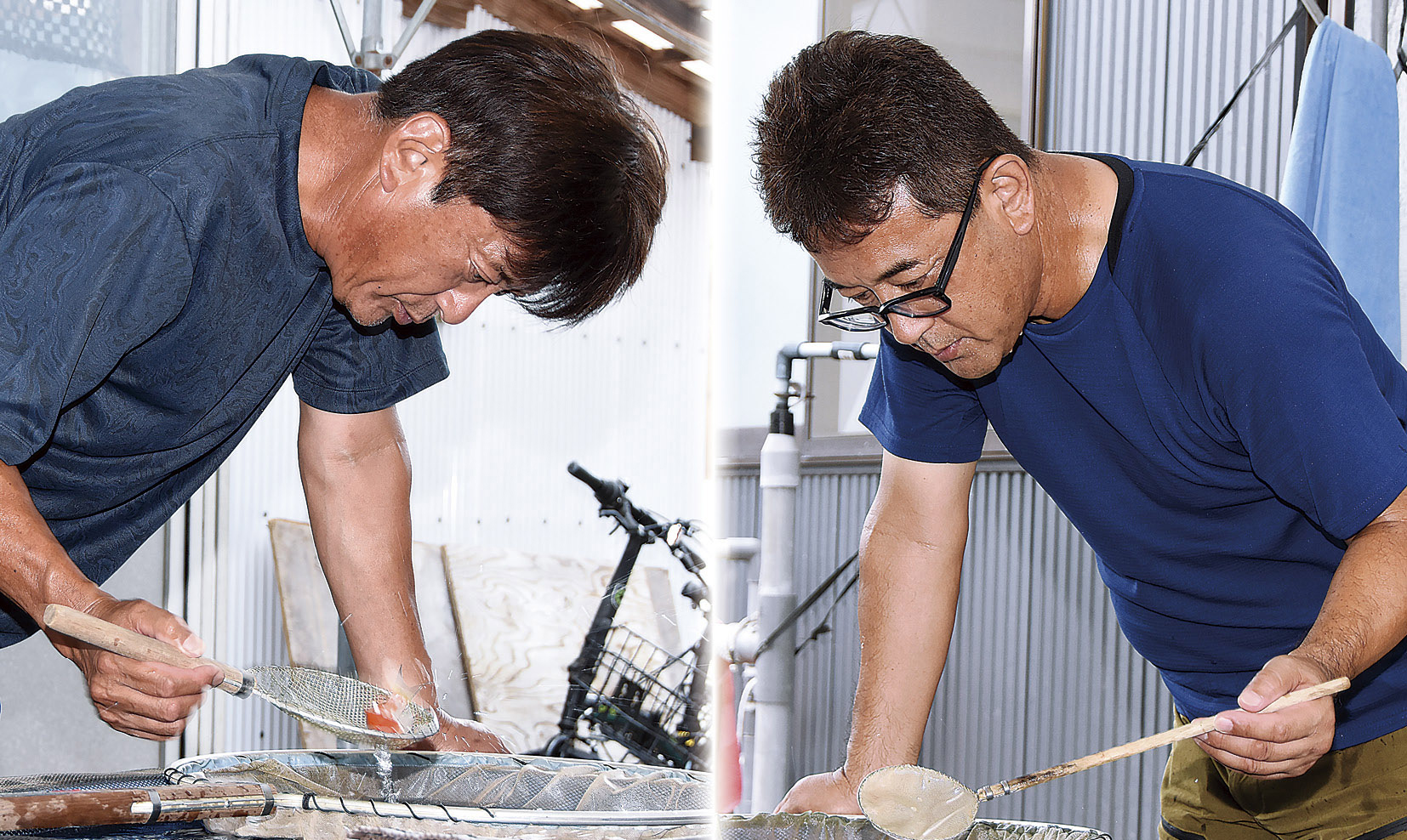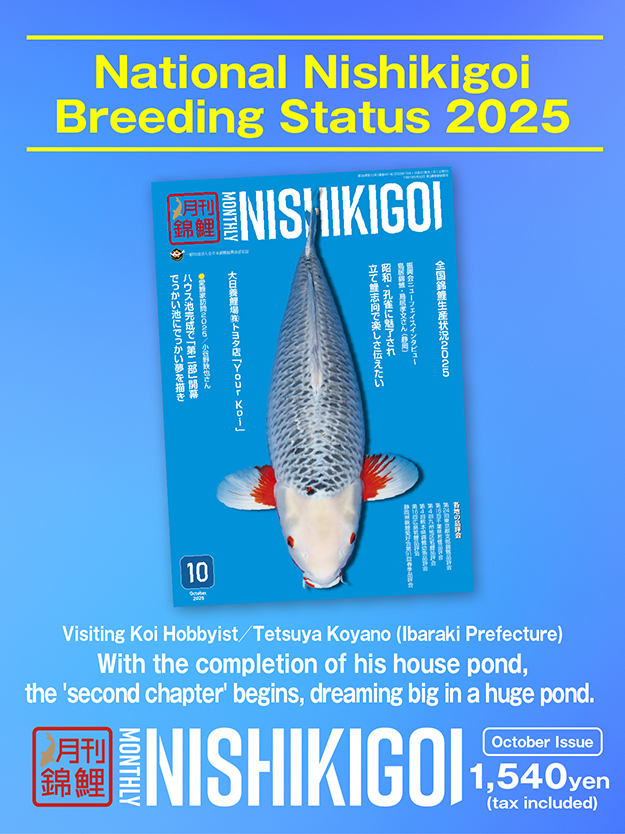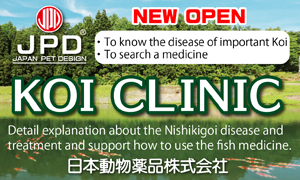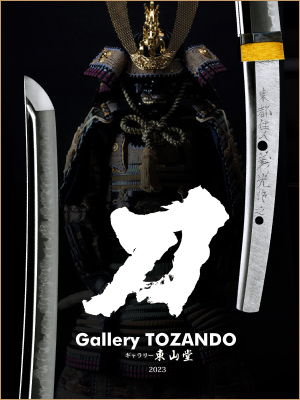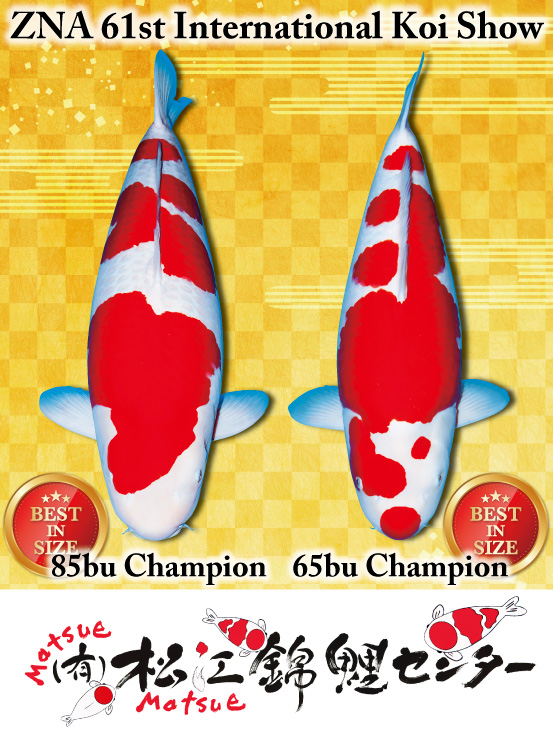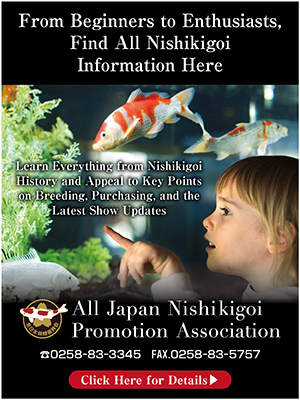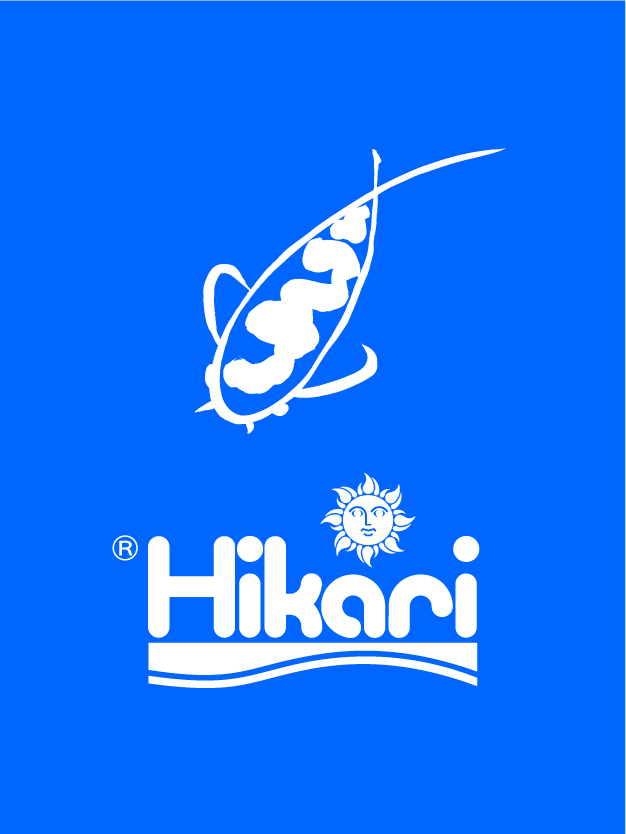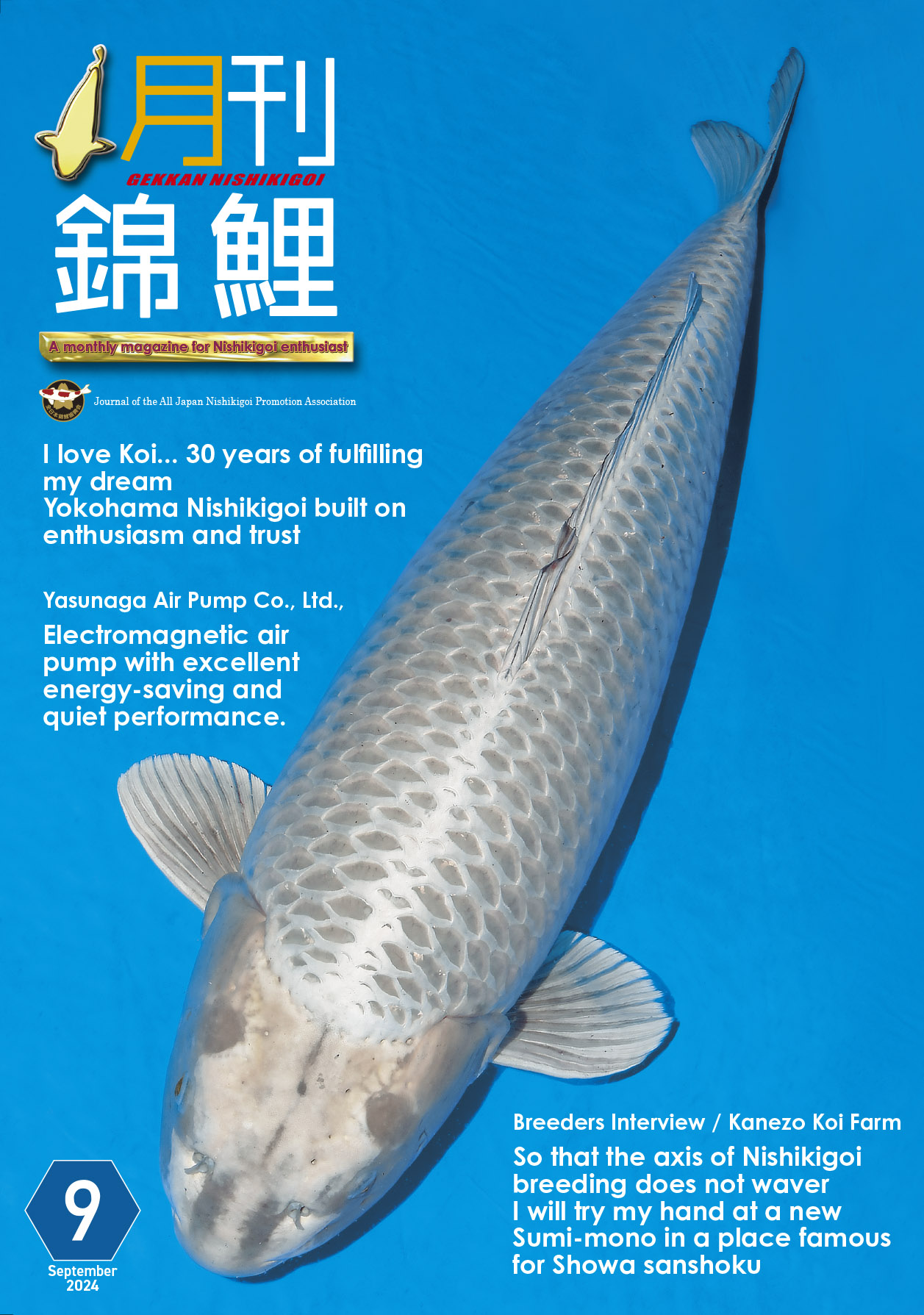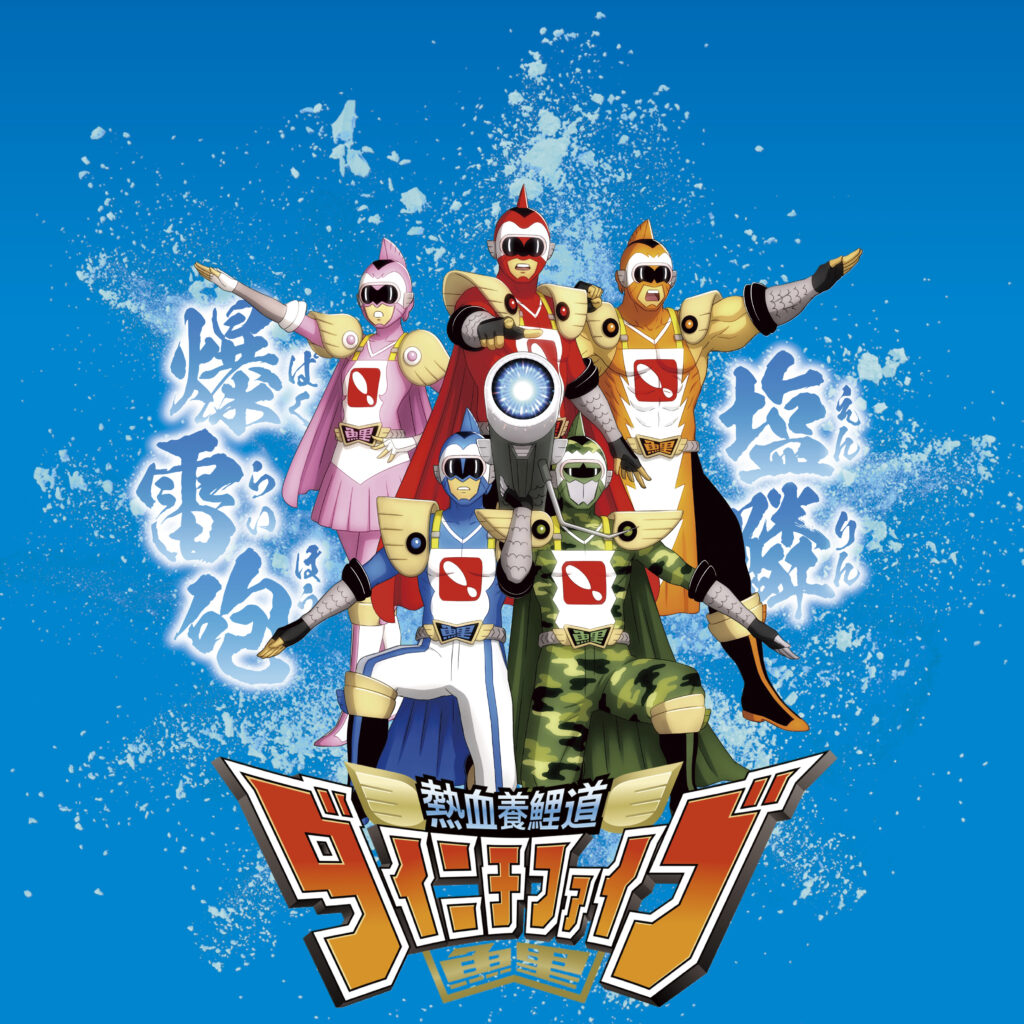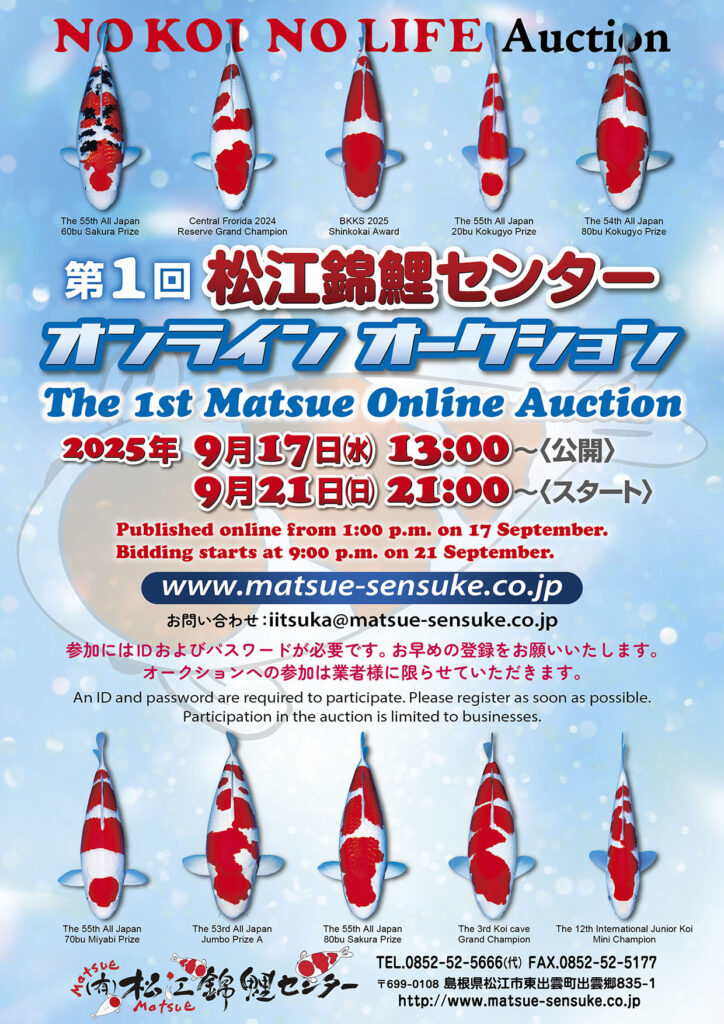Based on Matsue Kohaku, we tried to create something on Koromo
But the core is still Kohaku
ー According to the producer survey you responded to, you’re breeding Koromo in addition to Kohaku and Ginrin Sanshoku. That was a bit unexpected.
Hiroaki: It’s only been two years since we started breeding Koromo. I felt that Koromo had been declining in recent Tokyo competitions, so I decided to try breeding them last year. As a beginner, I wasn’t able to produce the kind of Koromo I wanted, but I decided to continue this year because it’s not good to give up after only one year. I want to raise Koromo to a certain size, so I’m using Kuhaku females and crossing them with Koromo’ males.
ー How about the fuki of the offspring with that combination?
Hiroaki: In the first year, the fuki didn’t develop as well as we hoped. Some did appear, but it was quite slow. The pattern we envisioned didn’t emerge right away. It seems like it will take quite a while for the fuki to fully develop, maybe 3-4 years. Since we can’t give up after just one year, we’ve decided to change the male fish this year. The president brought a male with a beautifully developed fuki.
ー Will you continue until you see the results?
Hiroaki: Yes, that’s the plan. We thought that crossing two fish with fuki wouldn’t produce large koi, so we’re planning to use our base Kohaku and add fuki to it. Then, we’ll use the offspring from that to make improvements. However, we can only use one or two nursery ponds for this, and even then, we’ll only have 60,000 to 70,000 fry at most. But we hope to find at least a few good ones among them.
ー Where did the male parent koi with the Koromo come from?
Takahiro: It’s from Mr.Tani(Tani Koi Farm) I heard they created it by crossing Nogami’s Kohaku with a male Koromo from Izumiya.
Hiroaki: The female Kohaku is a descendant of our Setsuren. In the first year, we naturally bred it with another Kohaku of ours that had two Koromo patterns. But this year, we used artificial breeding. The Koromo that Mr.Tani created has a very good indigo blowing.
ー The broodfish is a Matsue’s Kohaku, so the offspring should grow quite well, right?
Hiroaki: I think they will grow well. The shape of the fry in the first year was also quite good, and they grew pretty fast.
ー It would be great if they could grow to be beautiful Koromo, right?
Hiroaki: Yes, it would be great if they could grow even a little bit. Although it takes time, if we keep them long enough, they should eventually grow some. Nowadays, there aren’t many koi with large Koromo.
ー It’s really rare to find koi with large, beautiful Koromo.
Hiroaki: Our goal is to breed koi like that. I think it’s important to maintain this direction.
ー Overall, over 90% of the koi produced are Kohaku, and the rest are metallic Ginrin Sanshoku, Sanshoku, and a small number with Koromo.
Hiroaki: That’s right. I think the number of Sanshoku will gradually increase. However, there are probably only a few Tate koi.
ー The popularity of other koi varieties is also rising. Are you considering increasing the breeding of other varieties and reducing the number of Kohaku?
Hiroaki: Absolutely not. The proportion of Kohaku may increase, but we won’t increase the breeding of other varieties.
Increase staff to improve work efficiency
The goal is to surpass the koi of “the highest masterpiece”
ー I’ve seen a significant increase in your staff since our last interview.
Hiroaki: Now we have Fujisaki, Takami, and the president’s two sons (Masao and Tomoyuki), as well as my own son, Koki. And starting this year, we’ve hired part-time workers to come in two at a time for half-day shifts. Before, it was just the three of us hauling in the nets and doing the sorting ourselves. We could only manage to process 3 or 4 batches at most. But with the part-time workers, we can now handle 6 or 7 batches in half a day. Today, we’ve already done 7 batches, and we’re currently on the second round of sorting. Things are moving much faster. We even had the part-time workers help with the first round of sorting. This year, the turnover has been especially quick.
ー How many selecting have you done so far?
Hiroaki: We’re up to the third selecting now. We’re currently netting the pond. We did the fry pond in the morning and the concrete pond at the store in the afternoon. This is actually the fourth selecting. Now, we’re entering the stage of differentiating between commercial fish and koi for display. At the farm, we usually do up to three selecting.
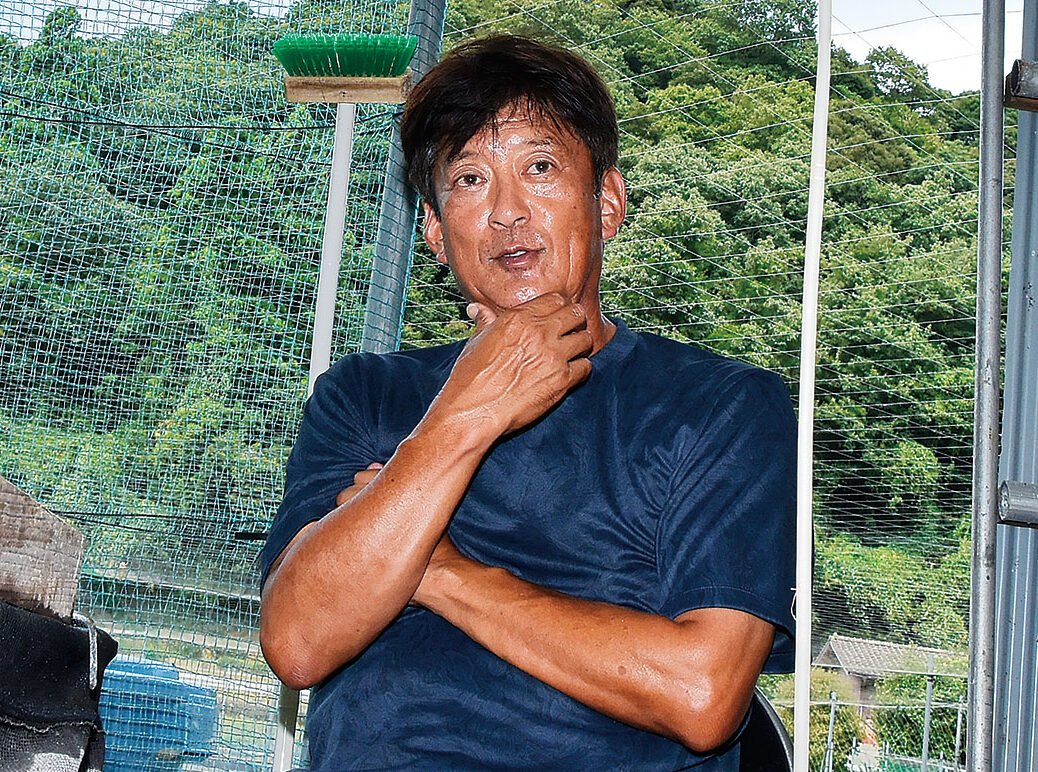
ー What’s the size?
Hiroaki: They’re not very big, only 12-13 centimeters. Because the number of greenhouses is limited, we have to put several batches of fish in one pond. Now that spawning is finally over, the boxes are starting to empty out, and we can move the middle fins there. In the long run, I hope they can grow to a certain size by next spring. They haven’t even grown to half the size yet, so there’s still a long way to go. With such an increase in production this year, I really don’t know how to manage. The quality of each parent koi is pretty good, and I think we can preserve more varieties.
ー With such a large quantity, will the selection process be stricter?
Hiroaki: By the fourth selecting, we basically discarded all the koi with blurry facial patterns. As for the middle fins, we only kept those with sumi on faces and spotted tails. Thanks to everyone’s hard work, orders are now coming in steadily. Following this momentum, we should be able to sell quite a few.
ー This year’s results are also quite promising. I heard that the koi that won the Jumbo Prize A is Mr. Matsue’s masterpiece, but to aim for the grand championship, wouldn’t it need to be even better?
Hiroaki: Yes, that koi received a lot of praise from people who support us, saying that I had bred a fantastic Kohaku koi. That’s a huge asset to me. So, my strong desire now is to somehow breed a koi that surpasses it.
ー I listened to a very passionate speech today. I believe the pursuit and beliefs of Matsue Nishikigoi Center will surely resonate with readers.

